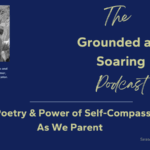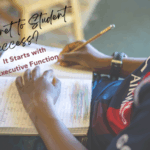My wife and I graduated from the same college, and when she grabbed her diploma, she did so with a GPA that was .05 lower than mine.
You can imagine how much I’ve enjoyed that differential over the years – just as you can imagine the eye rolls I (rightly) receive when I bring up this tidbit in casual conversation or, say, publish it on a website.
Behind her irritation and my childish pleasure is a near-universal recognition that while we may find it tempting to view standardization measurements as sources of something meaningful – maybe even the truth – we understand that they are, in fact, wobbly, flawed, and imprecise.
The temptation is strong though! After all, I could be less than one-tenth of a percent smarter than my wife. But probably not.
We know things in relation to other things – we know tall in comparison to short, clean in comparison to messy. So why wouldn’t we compare what our children know to some standard of what they should be learning? After all, we worry they’re falling behind or, on the flip side, take pride in their ability to achieve beyond expectations. Comparison to a standard makes almost unimpugnable sense.
And yet.
The Thing about Lures
Like many lures, standardization relies on a trick. It rests on the belief that human beings learn at more or less the same rates, express understanding in similar ways, and move from one level of knowing to the next in a more or less linear fashion. And so when we take a picture of a child’s learning and compare it to the pictures of thousands of other children’s learning trajectories, we will recognize whether a child knows what they should know at a given moment in time.
Dr. Maria Montessori observed a very different progression of natural learning as she developed her methodology. She noted that deep and enduring learning occurs naturally when children follow curiosity and are led by engaged, caring guides. She found that while children move through predictable stages of development, their pace of learning and the precise contours of it vary widely within those stages.
She understood long before Todd Rose wrote The End of Average that human beings are jagged, not standardized. We are individuals with varying strengths and deficiencies that grow and diminish over time.
And yet we’re often reduced to a simplistic, one-dimensional measure. “We live in a world built around an unquestioned faith in the power of the average,” Rose argues, not because it’s an accurate measurement but because it’s simple.
(Read about Norma and the pursuit of the ideal woman, and you’ll see the fundamental flaw and pervasive danger of relying on averages for anything approaching the truth.)
Why this lionization of the average?
If human abilities are jagged, why do so many psychologists, educators, and managers continue to use one-dimensional thinking to evaluate talent? Because most of us have been trained to implicitly prioritize the system over the individual.
In the case of our children, the “system” is an educational model based on industrial principles that prioritize efficiency over depth and conformity over complexity.
While there’s clear evidence that we can grow as learners when we chase a standard, there’s also clear evidence that the chase to achieve or surpass the standard can do real damage to our emotional and intellectual lives.
Factory Learning
It’s not hard to identify the flaws of an educational system that borrows its structure from the industrial model where children are cohorted by age, moved through an assembly line at a standardized pace, and sorted into groups based on imprecise metrics of success.
Such a model aims to distill a student’s knowledge, skills, persistence, ambivalence, integrity, curiosity, collaborative abilities, and raw talent into letter grades, which increasingly are mostly A’s.
Rooted in the Industrial Revolution’s pursuit of efficiency, this system mimicked the one invented in factories to identify whether or not the products were “up to grade….”
Unfortunately, as Hartmann (2000) points out, the “grading system” made it more difficult for students whose style of learning did not match the more instructional, auditory, lecture style of teaching used by [William Farish, a 1792 Cambridge University tutor]. This style of teaching led to more rote learning which was needed to pass tests, whether or not the students understood the material. Critical thinking and questioning skills soon became irrelevant and lost as a goal of assessment… Additionally, the teachers’ motivation of students through their contagious love of a subject was also lost.
Most of us have personally experienced the discouraging results of this system. We chased the reward or ran faster to stay ahead of the punishment, and in so doing felt the power of a system that prioritizes the result of “learning” over the process.
Of course, the issue with learning in this manner is that we often don’t truly understand or learn; instead, we temporarily gather information, perform the required task, and then move on to the next fabricated challenge that we need to overcome to earn the next reward or avoid the next punishment.
And yet!
While most of us can likely point to a personal experience when the system misread our individual abilities, it’s hard to simply ignore the impulse to know whether our children know what they need to know at a given moment in time – whether it’s a content area or a skill.
Enter the Mastery movement.
Mastery and Montessori
A few years ago, I happened to be at the right place at the right time in Cleveland, Ohio of all places. I worked with Scott Looney, Head of Hawken School, to launch both The Mastery Transcript Consortium and, a few years later, The Mastery School of Hawken.
These two initiatives sought to re-imagine the ways schools work so that students, educators, and parents could swim past the lure of standardization and towards more accurate and more meaningful indicators of deep and enduring learning.
At its core, the Mastery movement seeks a better way to inspire meaningful learning. It’s a movement that prizes mastery over gamesmanship, demonstration over grades, applied learning over simulation.
It echoes much of what Dr. Montessori observed about the nature of learning. In Mastery learning, students learn content and skills in the process of doing or making something meaningful. Mastery and Montessori educators understand that purpose and curiosity inspire deep learning in ways that are far more effective and far more lasting than standards and grades do.
Take a look at how Sal Khan frames the movement:
The Mastery and Montessori approaches acknowledge that we grow more deeply, humanely, and permanently when we pursue learning based on intrinsic motivation, fueled by a sense of curiosity, guided by caring, knowledgable, and adept adults who know how to push, pull, step away, and step in for our individual growth.
And the results speak for themselves. Take a look at this report called What About College? that I wrote while at the Mastery School. Take a look at where students from Marin Montessori matriculate.
It’s hard to resist the lure, but remember the hook dangling at the end.

Terry is the Director of Communications and Story at Marin Montessori School. A classroom teacher for 30 years, he manages Grounded and Soaring.






LK, current parent
This is great! Thanks, for this perspective.
AK
Helpful perspective. Very engaging. Thank you!